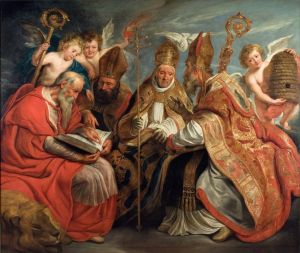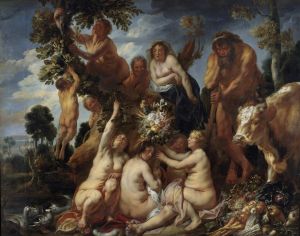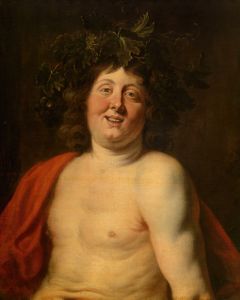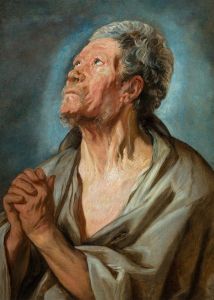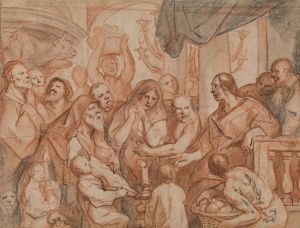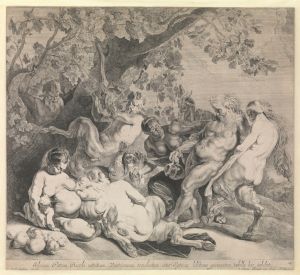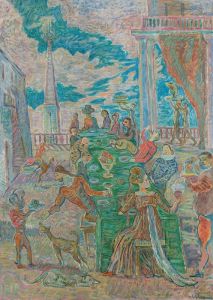
Silenus and the four seasons
A hand-painted replica of Jacob Jordaens’s masterpiece Silenus and the four seasons, meticulously crafted by professional artists to capture the true essence of the original. Each piece is created with museum-quality canvas and rare mineral pigments, carefully painted by experienced artists with delicate brushstrokes and rich, layered colors to perfectly recreate the texture of the original artwork. Unlike machine-printed reproductions, this hand-painted version brings the painting to life, infused with the artist’s emotions and skill in every stroke. Whether for personal collection or home decoration, it instantly elevates the artistic atmosphere of any space.
Jacob Jordaens was a prominent Flemish Baroque painter known for his vibrant and dynamic compositions. One of his notable works is "Silenus and the Four Seasons," which exemplifies his mastery in depicting mythological themes with a lively and robust style. Jordaens, who lived from 1593 to 1678, was a contemporary of Peter Paul Rubens and Anthony van Dyck, and he is often celebrated for his ability to infuse his paintings with a sense of movement and vitality.
"Silenus and the Four Seasons" is a painting that draws upon classical mythology, a common source of inspiration for Baroque artists. Silenus, a figure from Greek mythology, is often depicted as a jovial, rotund companion of Dionysus, the god of wine. He is typically portrayed as an older man, often inebriated, and is associated with wisdom and the natural world. In this painting, Jordaens captures Silenus in a scene that also includes personifications of the four seasons, a popular allegorical theme in art that symbolizes the passage of time and the cyclical nature of life.
Jordaens' depiction of Silenus is characterized by a sense of humor and earthiness, qualities that are often present in his work. The painting likely features Silenus in a central position, surrounded by figures representing Spring, Summer, Autumn, and Winter. Each of these figures would be depicted with attributes traditionally associated with their respective seasons, such as flowers for Spring, sheaves of wheat for Summer, fruits for Autumn, and perhaps a cloak or barren branches for Winter.
The composition of "Silenus and the Four Seasons" would be expected to reflect Jordaens' typical style, which includes a rich color palette, dynamic movement, and a strong sense of physicality. His figures are often robust and full of life, conveying a sense of abundance and vitality that is characteristic of the Baroque period. Jordaens was known for his ability to capture the textures of flesh, fabric, and other materials with great skill, adding to the realism and immediacy of his scenes.
While specific details about the painting "Silenus and the Four Seasons" are limited, it is likely that Jordaens employed his usual techniques of dramatic lighting and composition to create a sense of depth and engagement. His use of chiaroscuro, the contrast between light and dark, would have added to the three-dimensionality of the figures and enhanced the overall impact of the scene.
Jordaens' work often reflects the cultural and artistic milieu of 17th-century Flanders, where there was a strong interest in classical themes and a fascination with the natural world. His paintings are celebrated for their ability to convey complex allegorical messages in a manner that is both accessible and visually compelling.
In summary, "Silenus and the Four Seasons" by Jacob Jordaens is a testament to the artist's skill in bringing mythological subjects to life with energy and humor. Through his adept use of color, composition, and allegory, Jordaens creates a work that captures the essence of the Baroque fascination with the interplay between humanity, nature, and the divine.





